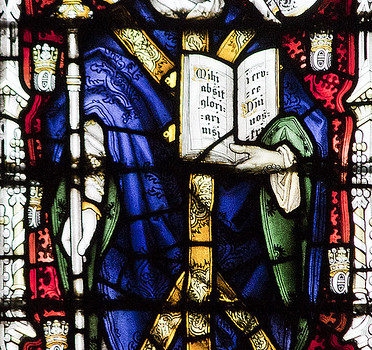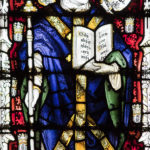St. William of York (Bishop)
Also known as William of Thwayt, William Fitzherbert was the son of Count Herbert, treasurer to Henry I, and to Emma, half sister of King Stephen. Perhaps because of his royal connections, he became canon and treasurer of York Minster and, in 1140, he was elected Archbishop of York. But Archdeacon Walter of York and […]



Also known as William of Thwayt, William Fitzherbert was the son of Count Herbert, treasurer to Henry I, and to Emma, half sister of King Stephen. Perhaps because of his royal connections, he became canon and treasurer of York Minster and, in 1140, he was elected Archbishop of York. But Archdeacon Walter of York and the diocese’s Cistercian monks accused him of unchastity and simony, claiming that he had paid to be elevated to the archbishopric. The opposition by the Cistercians was no doubt influenced by the fact that the other candidate for the office had been Henry Murdac, the abbot of the Cistercian Fountains Abbey. (See June 7, Robert of Newminster.)
Because of the controversy surrounding the election, the Archbishop of Canterbury refused to consecrate William, pending an appeal to Rome. St. Bernard of Clairvaux, a Cistercian, exercised his powerful influence against William in favor of Murdac, going so far as to say that William was, “rotten from the top of his head to the soles of his feet.” But in 1143, William proved his innocence so conclusively that he was finally consecrated as archbishop.
William set himself at once to carry out reforms in his diocese, and his gentleness and charity soon won him popularity. Unfortunately, through procrastination, he failed to receive the official pallium — the symbol of the pope’s authority — before the pope who sent it had died, and the papal legate took the pallium back to Rome. When William went to Rome to retrieve it, the new pope, Eugenius III, who was a Cistercian and who had sided with the archbishop’s opponents, suspended him. When a group of William’s followers violently attacked some of the monks of Fountains Abbey and set fire to the monastery farms, the pope then deposed William in 1147 and named Murdac archbishop of York.
William then retired to Winchester where he spent the next six years of his life living as a simple monk, spending his time in prayer and mortification. In 1153, after the pope, St. Bernard, and Henry Murdac all had died, he then appealed to the new pope, Anastasius IV, for restoration to his see, which was granted.
After now properly receiving the pallium, William returned to York, where he showed great kindness to the Cistercians who had opposed him, and promised full restitution to Fountains Abbey. But within only a few weeks he was dead.
William’s death on June 8, 1154 followed such a sudden attack of violent pain that many felt he had been poisoned. Some blamed Osbert, the new Archdeacon of York, but their suspicions were never proved. Miracles took place at his tomb, and in 1227 he was canonized by Pope Honorius III.
Lessons
1. We sometimes forget that saints are humans beings with faults and failings. It seems that William of York may have been something of a procrastinator, and it’s very possible that his first appointments were due to his royal connections. We can also see that St. Bernard of Clairvaux was extremely prejudiced against William and — dare we say it? — somewhat uncharitable in his language. But the true saint isn’t someone who is perfect, it is the person who keeps trying and who “endures to the end” (Mark 13:13).
2. Being falsely accused is probably one of the hardest trials to endure, and William certainly had to contend with much ill will, even by otherwise holy people. But William no doubt drew strength and courage from the example of our Lord, and so was able to freely forgive his enemies, just as Christ did from the cross.
Other Saints We Remember Today
- St. Medard and Gildard (560), Bishops
- St. Clodulf of Metz
- Bl. Pacificus of Cerano
image: Stained glass of William of York, photo by Fr. Lawrence Lew, OP / Flickr (CC BY-NC-ND 2.0)














